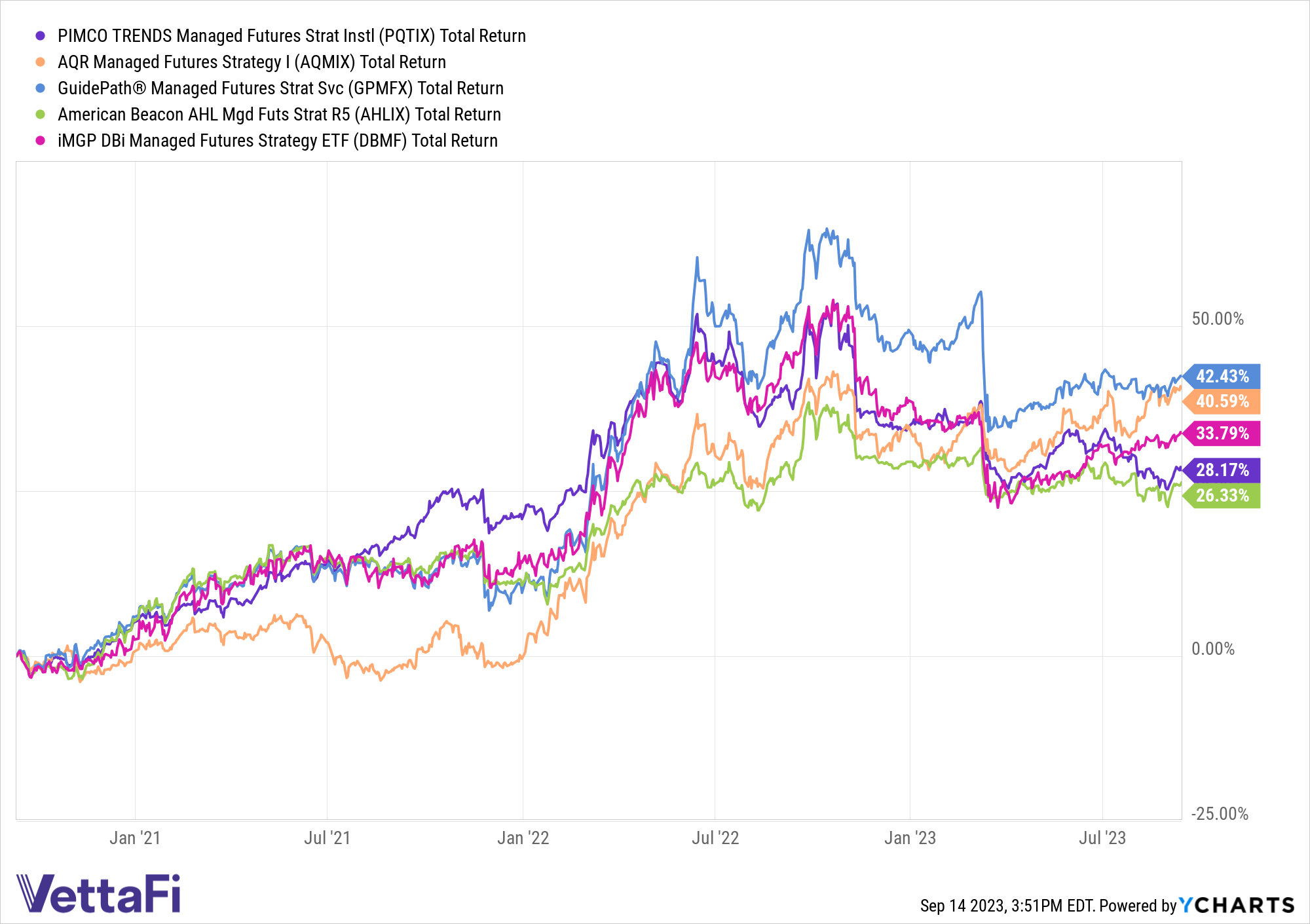Managed futures are a strong portfolio diversifier and have gained ground with investors in the last eighteen months. DBi seeks to replicate the average performance of the largest managed futures hedge funds with their fund the iMGP DBi Managed Futures Strategy ETF (DBMF) and recently discussed mutual fund replication.
DBi rose to prominence last year with DBMF. It’s an ETF that employs a replication strategy to capture managed futures hedge fund performance. The fund does so by analyzing the trailing 60-day performance of the 20 largest managed futures hedge funds. The model then seeks to replicate the averaged performance of the hedge funds through approximately 10-15 futures contracts.
But what about managed futures mutual funds? Could the model feasibly employ the same replication strategy in mutual funds? Andrew Beer, co-founder and managing member of DBi as well as co-PM of DBMF gave insight into the firm’s thoughts.
“The awkward answer is, yes, you could easily replicate most managed futures mutual funds,” Beer said. “We have no interest in doing this as a business, but it is a powerful tool to break down what they’re doing.”
See also: “Why Looking Beyond Brands Matters in Managed Futures”
Transparency Matters When Volatility Spikes
It is nigh impossible to know exactly what is in a managed futures hedge or mutual fund at any given point in time. Investors may receive quarterly updates as to positions but when markets turn precipitously, advisors and investors are left to trust the managers implicitly. It can often result in a tendency for investors to chase returns if a strategy underperforms its peers.

“We don’t see any evidence that all these modeling bells and whistles make much of a difference over time,” Beer explained. “If they did, shouldn’t that make it harder to replicate them?”
DBMF takes the opposite approach. It is fully transparent, with daily updates on holdings and positions. It’s one of the clear benefits of transparent ETFs and can make riding out volatility and drawdowns easier by understanding what’s under the hood. By taking the average performance of the 20-largest managed futures hedge funds, the strategy eliminates single manager risk within the space. Over the last three years, it’s resulted in strong performance compared to individual mutual funds.
DBMF Offers Replication and Transparency
The first quarter of 2023 was a challenging one for DBMF. However, the fund has made up nearly all losses YTD. The fund is down just 2.9% as of 09/14/23. What’s more, though the fund suffered some outflows in the first half, it has retained over three-quarters of the $1 billion in AUM it brought in last year.
The iMGP DBi Managed Futures Strategy ETF (DBMF) is an actively managed fund that uses long and short positions within derivatives (mostly futures contracts) and forward contracts. These contracts span domestic equities, fixed income, currencies, and commodities (via its Cayman Islands subsidiary).
The position that the fund takes within domestically managed futures and forward contracts is determined by the Dynamic Beta Engine. This proprietary, quantitative model attempts to ascertain how the largest commodity-trading advisor hedge funds have their allocations. It does so by analyzing the trailing 60-day performance of CTA hedge funds and then determining a portfolio of liquid contracts that would mimic the hedge funds’ performance (not the positions).
DBMF has a management fee of 0.85%.
For more news, information, and analysis, visit the Managed Futures Channel.

